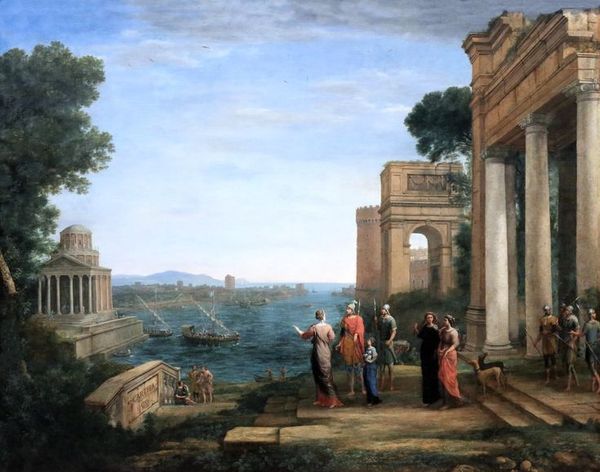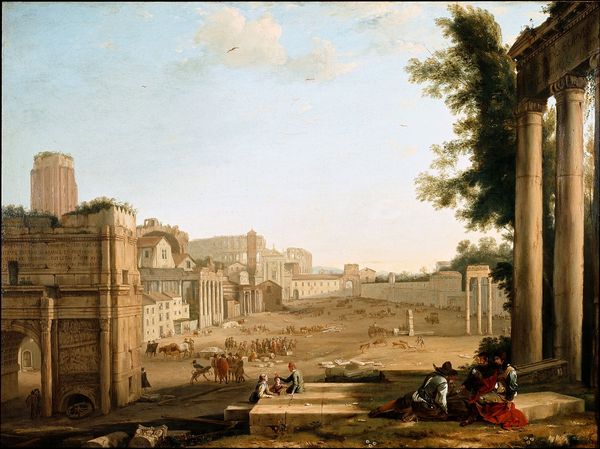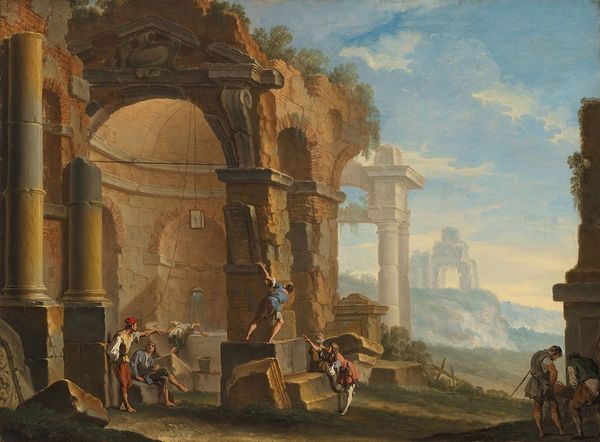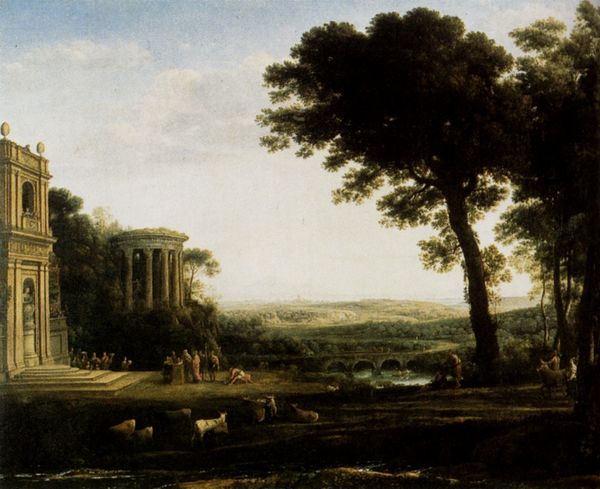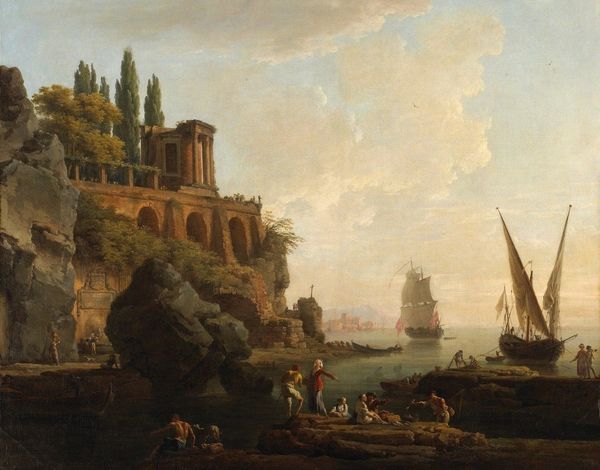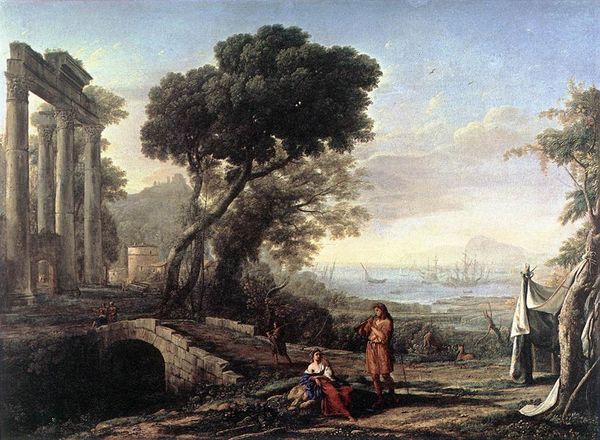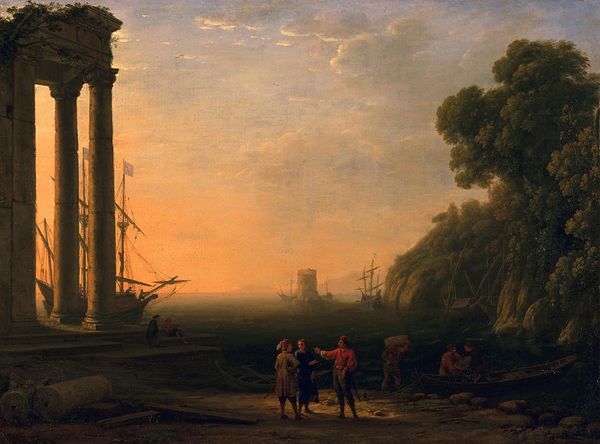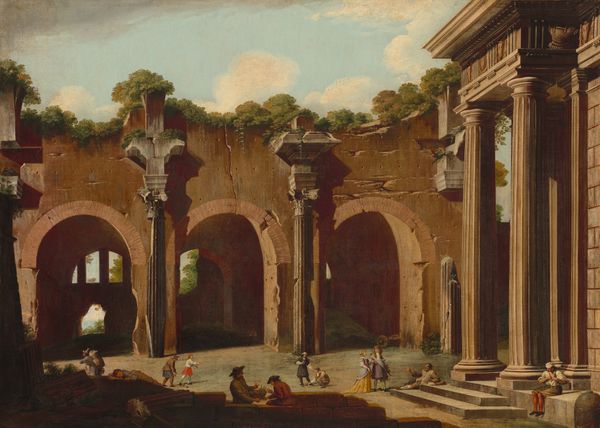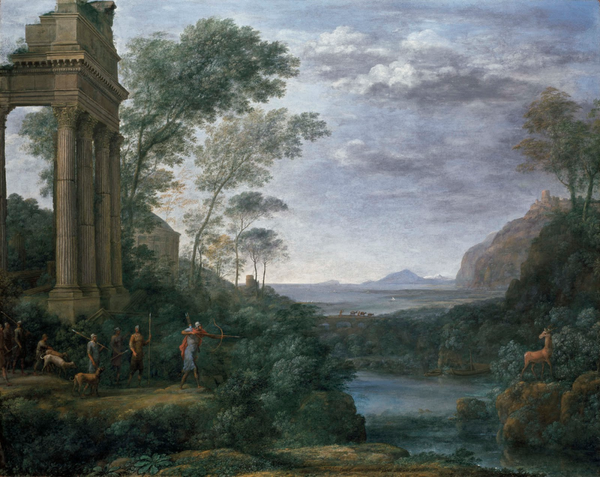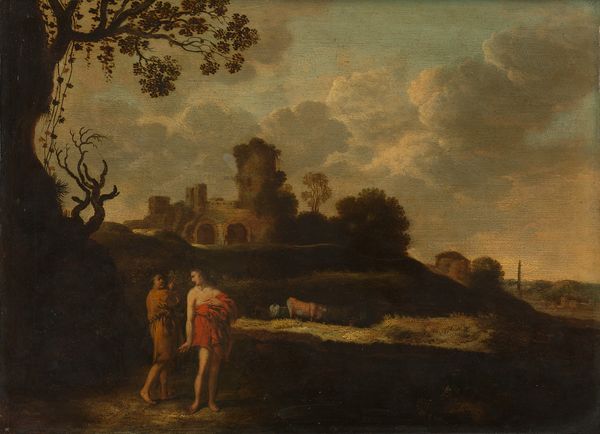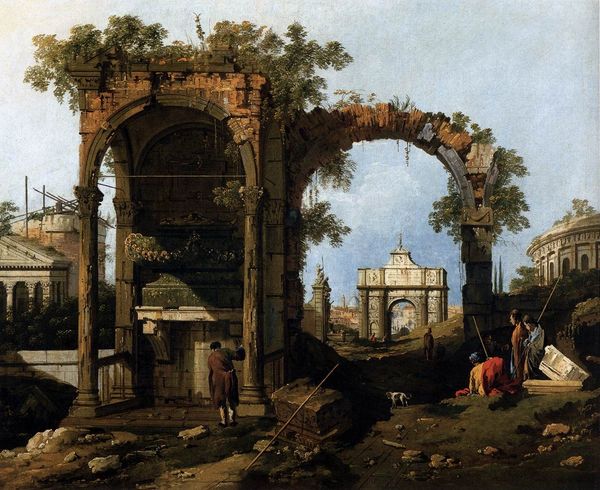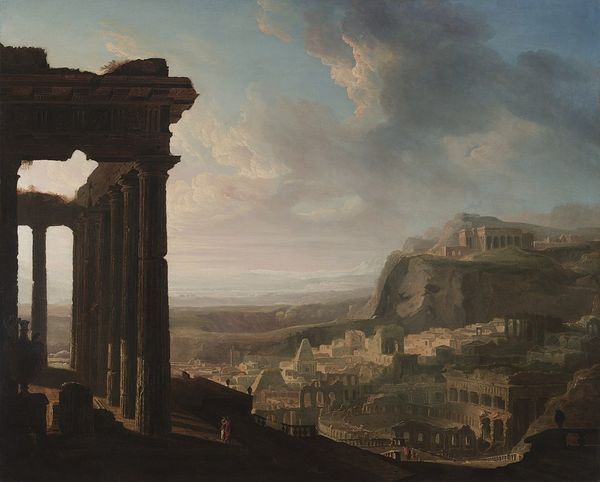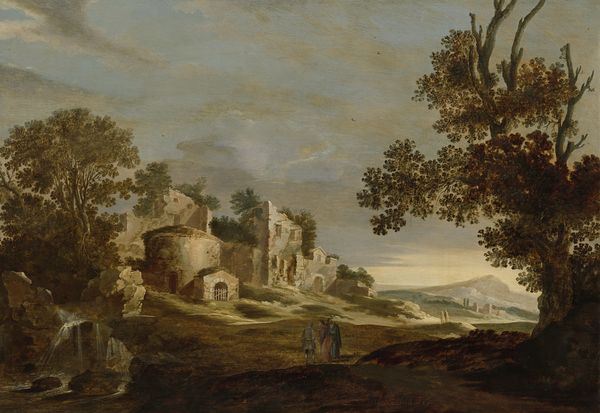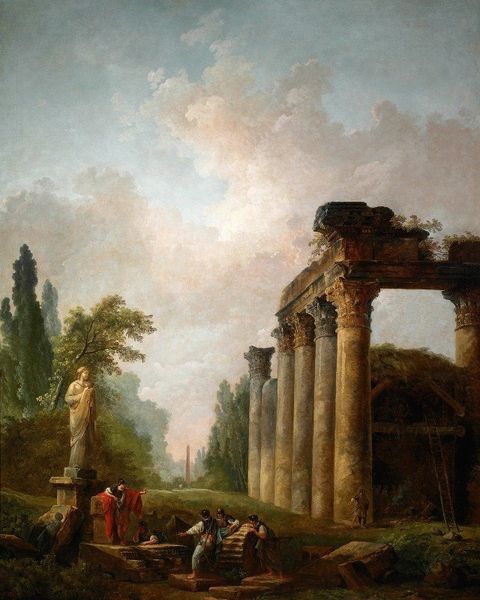
painting, oil-paint, architecture
#
sky
#
baroque
#
painting
#
oil-paint
#
landscape
#
classical-realism
#
perspective
#
romanesque
#
oil painting
#
roman-mythology
#
arch
#
mythology
#
cityscape
#
history-painting
#
architecture
#
building
Dimensions: 134 x 99.7 cm
Copyright: Public domain
Editor: We're looking at "Landscape with Aeneas at Delos" from 1672 by Claude Lorrain, currently hanging in the National Gallery. It's a classical landscape, rendered in oil on canvas. I’m struck by how serene and ordered it appears, almost staged. What can you tell me about it? Curator: Notice how Lorrain uses the oil paint to depict various textures – the rough stonework of the architecture contrasting with the smooth, almost ethereal, rendering of the sky. His process relies on layering and glazing, achieving this incredible luminosity. The work hints at a shift, where patronage wasn't just from the church or royalty, but merchants were beginning to dictate themes and materials. Do you think the mythological subject served as mere decoration for the increasingly powerful merchant class? Editor: That's a really interesting angle. I hadn't considered how the rising merchant class might have influenced the subject matter of classical paintings like this. Curator: Exactly! While superficially mythological, paintings like these actually show the patron’s own self-fashioning in an intellectual and powerful continuum of wealth and cultural control. The pigment itself would have been an incredibly precious material; consider who mined it, processed it, traded it, and profited from it, tracing each labor-intensive step of its material lifespan to the painting's market. Editor: It's a new perspective. I see how focusing on the physical production changes my view. It moves beyond the immediate scene. Curator: Thinking about materiality demands considering every element involved – from sourcing to display, and finally, consumption of the image. It reveals power structures we often overlook. Editor: So, viewing art through a materialist lens highlights the socio-economic networks underpinning the artwork, not just its aesthetic value? Curator: Precisely. It reminds us that art objects are commodities embedded in complex systems of labor and exchange. It can redefine "beauty" through ethical sourcing and equal access, and ask, ultimately, who profits? Editor: I’ll definitely consider this next time I visit an art museum. Thank you for shifting my thinking.
Comments
No comments
Be the first to comment and join the conversation on the ultimate creative platform.
